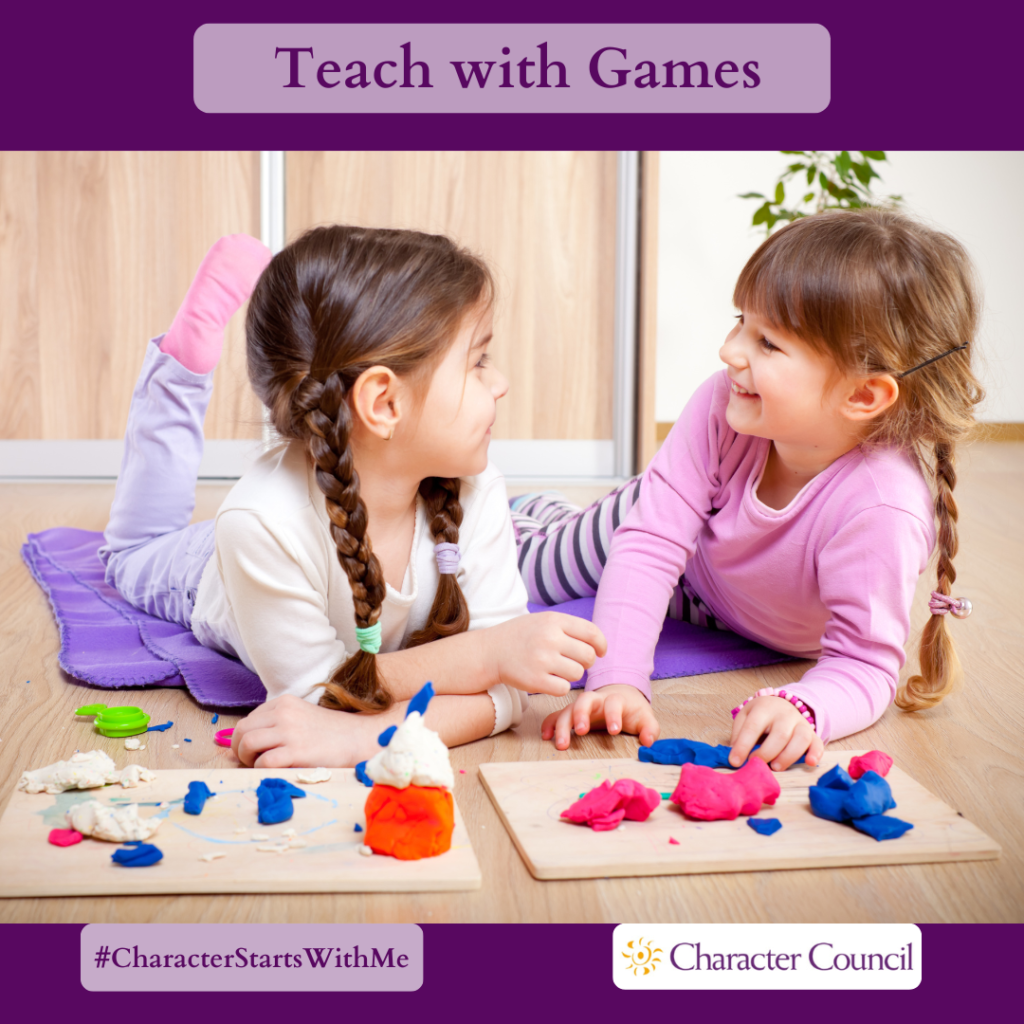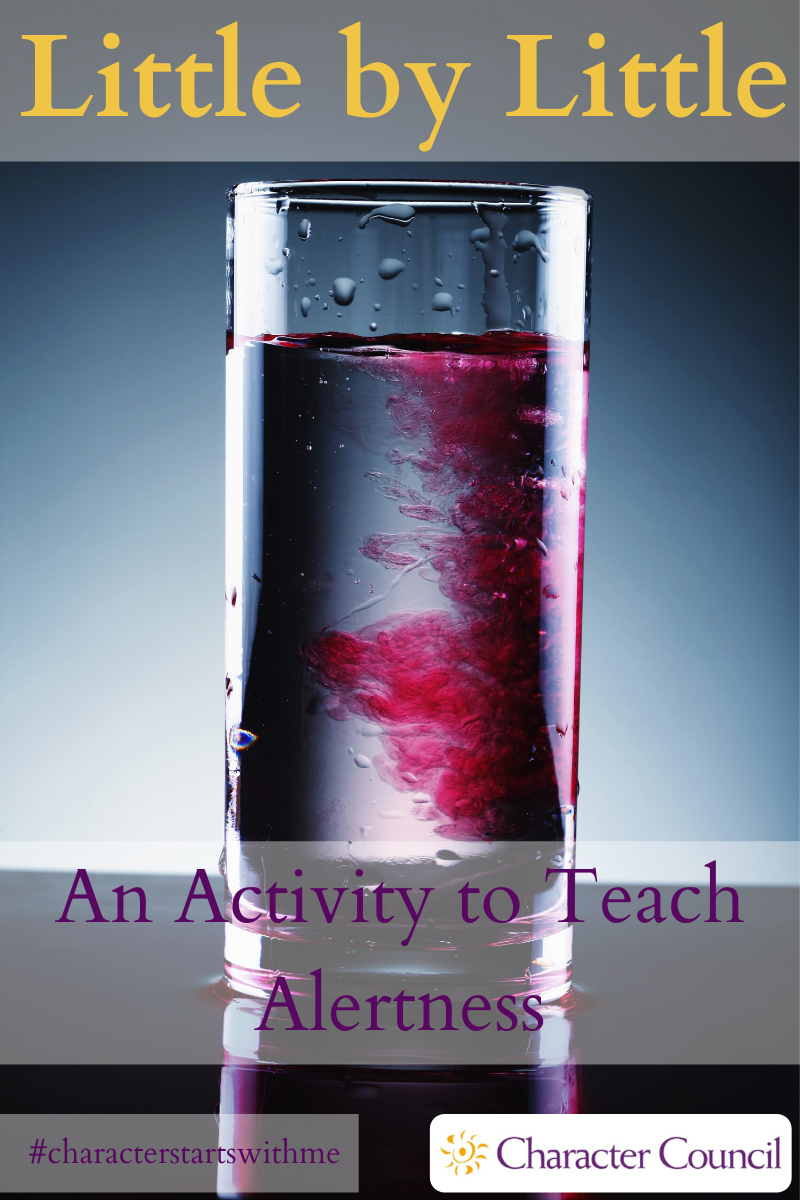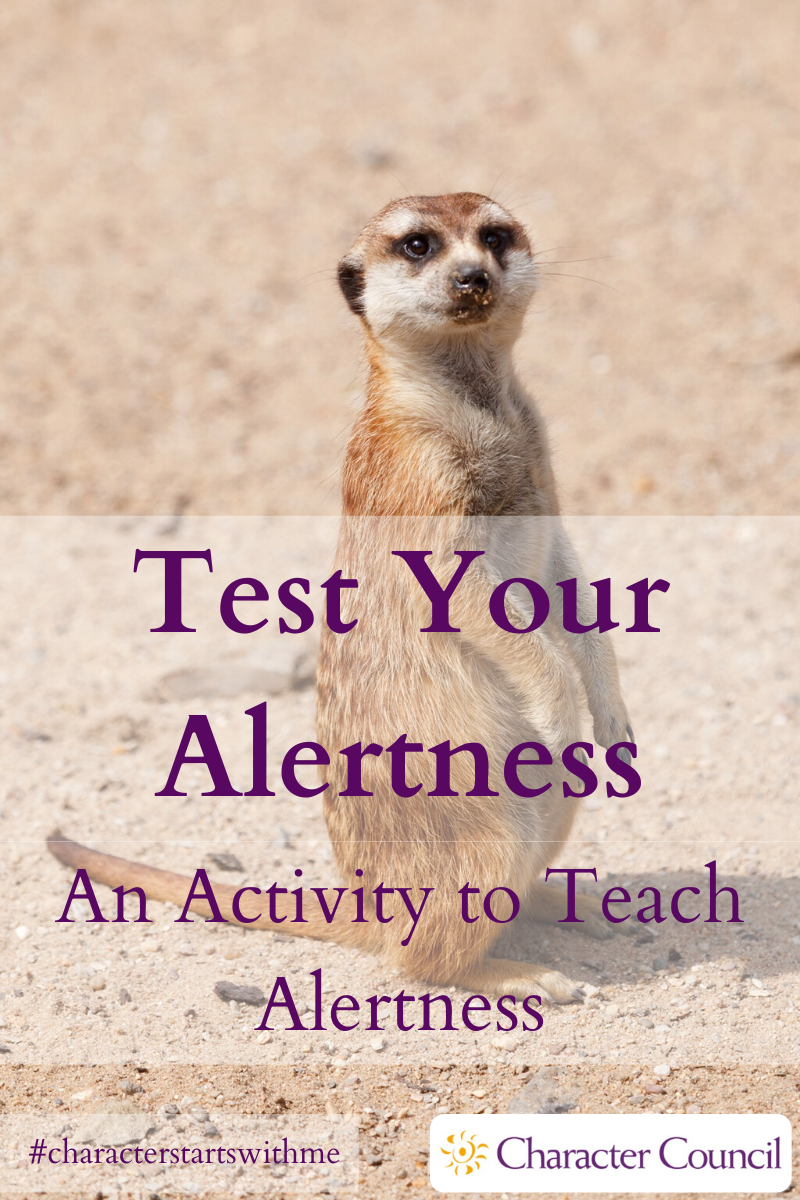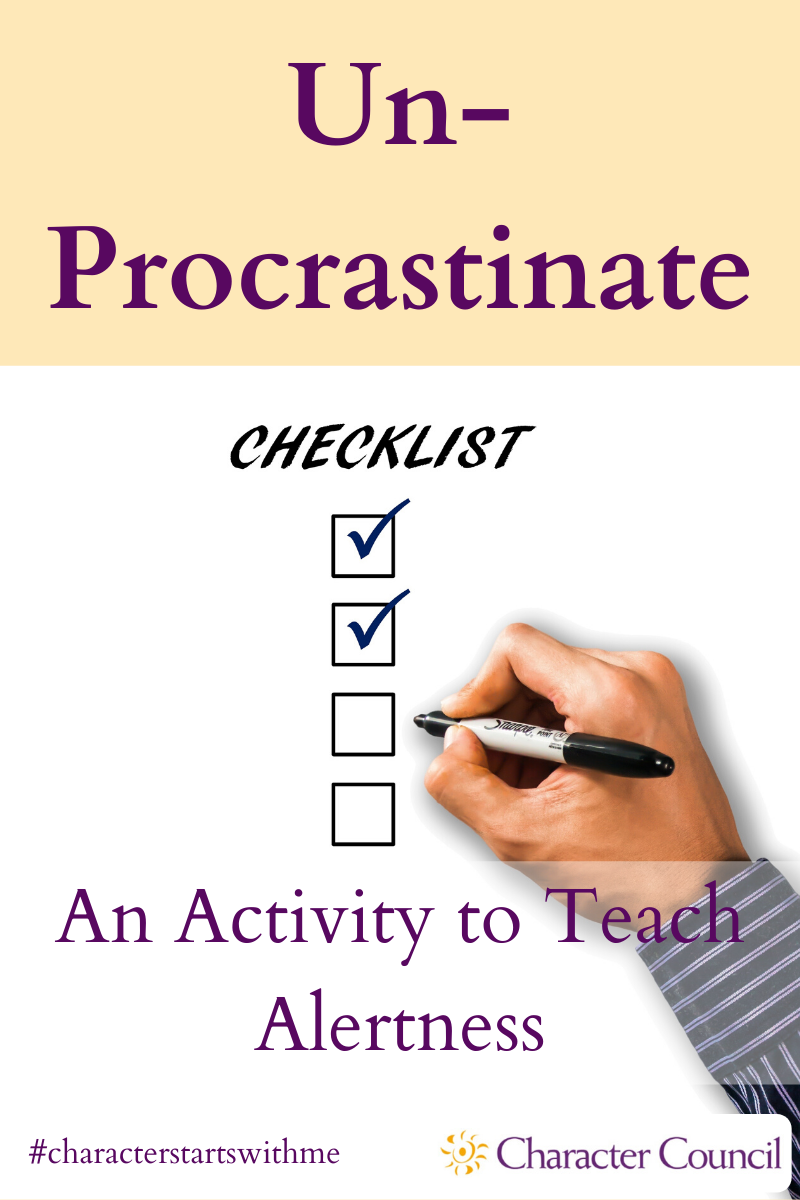
Alertness Activities
The activities here are fun ways to teach character. The game aspect makes the lesson more memorable. Each activity has processing questions at the end. Without processing the activity, the exercise is just a game. To make it a stronger lesson when you process it, relate the character quality to a core value that your organization promotes.
Consider picking a student to run the activity. You will need to give them time ahead of the activity to prepare. Another option is to pick a few students to run the activity for a younger classroom after you have run it for your class. Encourage your students to repeat it in the home for younger siblings or even parents.


You will need a clear glass jar filled with water. You will also need food coloring, (a bold color is best) and bleach. (I suggest that you practice this first to determine how much bleach you will need so that you can bring in the smallest amount needed.) Create a story about a child that is age-appropriate for your classroom. The child starts out getting into trouble doing small things. Each time you give an example of getting into trouble, add a drop or two of coloring to the water. (More if your container is large.) As the story progresses you can have the trouble gets worse or just keep it being small things. After you have added several drops to the water, have the child recognize just how much trouble they are in and decide to mend their ways. To correct their previous bad actions, have them go back and apologize or fix the situations in some way. Each time they take responsibility for their actions, add a drop of bleach to the water. At the end of the story, aim to have the water still be murky. Explain that sometimes it takes a while to repair the damage done. Use this story to explain that bad people do not start out being terrible. They start with small things and work their way up (or down!) to terrible.
To process this activity, ask these or similar questions:
- What did you think of this activity?
- Did you think the second set of drops would make the water completely clear?
- What do you think has to happen in the story to get the water completely clear?
- When you have done something wrong and apologized, do you immediately feel “completely clear”?
- Do you think you will remember this lesson the next time you are tempted, even if it is something small?

A game for older students: Start this activity by talking about how driving while under the influence affects your Alertness. Explain that driving at 60 MPH you will travel 88 feet in 1 second. (As a math connection you can let them figure this out for themselves!) Waiting 1 additional second to stop increases your risk of hitting something in this range. Reaction time is crucial. Measure off 88 feet in the hallway so that they can get a visual feel of the space traveled in that 1 second. Talk about distracted driving such as texting or trying to change CDs while driving.
A game for younger students: Have the students close their eyes while you change something in the classroom. Have them open their eyes and guess what has changed. Repeat this several times, making the change less noticeable each time. Relate this exercise to the need for being alert to clues of something that will get them into trouble.
To process the older student activity, ask these or similar questions:
- Were you surprised at the amount of feet you travel in one second?
- How does that make you feel about reaction times?
- Do you think you will remember this visual about the importance of being alert?
To process the younger student activity, ask these or similar questions:
- Did you think it would be difficult or easy to notice changes?
- How well did you do personally with recognizing changes?
- Did this make you more aware of being alert for clues to things that can get you into trouble?

Un-Procrastinate
We all have tasks that we don’t like to do so we put them off. For this exercise, ask the students to identify either something they always put off doing until the last possible moment such as pack your lunch in the evening or a single task that is currently on their “to do” list that just never seems to get done such as cleaning out their closet. Have them examine why they put it off. Does it get any easier? Usually not. Ask them if the task is really that bad. Have them try to put a positive spin on the task. For example, being grateful there is food for packing a lunch or being grateful that you have possessions to stuff in a closet. Now for the challenge: If they choose a repetitive task that they put off, then their challenge for this week is to do it FIRST! If they choose a single task, then their challenge is to complete it this week. Each day offer encouragement to Un-procrastinate. For repetitive tasks, you may offer for them to draw a picture of doing the chore and hang it where it will remind them. They may want to ask a family member for help in reminding them of their challenge. For single tasks, you may want to help them break the job into smaller portions and suggest they do just a piece of it every day. When the week is over, ask them how it felt to complete something and get it out of the way. Is there anything else they can Un-procrastinate about? It’s important to be alert to the tasks that require our attention so they can be completed in a timely manner.
To process this activity, ask these or similar questions:
- Was it easy to find a task you procrastinate?
- Were you surprised that most people had one? (or two or…)
- When you did it, was the job as bad as you thought it would be?
- Do you think this will help in un-procrastinate in the future?